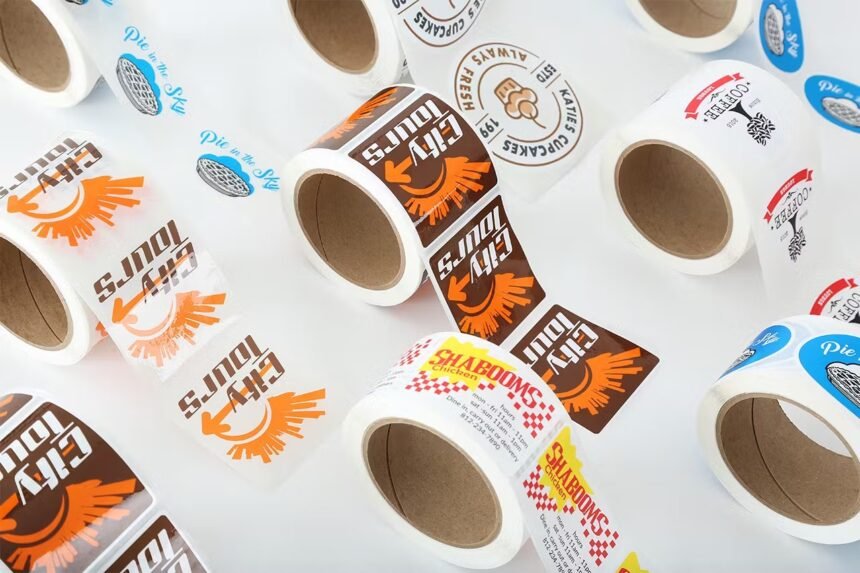Introduction to Sticker Printing
Sticker printing has emerged as a vibrant and versatile industry, offering endless possibilities for businesses and individuals alike. From branding to personal expression, stickers serve as a dynamic medium for communication and creativity. This article delves into the multifaceted world of sticker printing, exploring its evolution, materials, techniques, and myriad applications.
The Evolution of Stickers
Stickers have come a long way since their early inception as simple adhesive labels. Initially used for practical purposes like labeling products, stickers have evolved into a powerful marketing tool and artistic medium. The rise of digital printing technology has further revolutionised the industry, enabling high-quality, customisable sticker production at scale.
Historical Background
The concept of stickers dates back to ancient times when merchants would use adhesive labels to price their goods. However, it wasn’t until the 19th century that stickers began to take on their modern form with the introduction of self-adhesive paper by R. Stanton Avery in 1935.
Modern Developments
Today’s stickers are not just about functionality; they are about making a statement. With advancements in materials and printing technologies, stickers can now be produced in any shape, size, and design imaginable.
Types of Sticker Materials
The choice of material is critical in determining a sticker’s durability, appearance, and suitability for various applications.
Vinyl
Vinyl is the most popular material used for sticker printing due to its durability and weather resistance. It is ideal for outdoor use and can withstand exposure to sunlight and moisture without fading or peeling.
Paper
Paper stickers are cost-effective and suitable for indoor applications. They are often used for product labeling and packaging due to their ease of printing and affordability.
Polyester
Polyester offers excellent resistance to chemicals and heat, making it suitable for industrial applications where durability is paramount.
Sticker Printing Techniques
The quality and appearance of a sticker depend significantly on the printing technique employed.
Digital Printing
Digital printing is favored for its efficiency and flexibility. It allows for quick turnaround times and makes it easy to produce short runs with intricate designs.
Screen Printing
Screen printing is ideal for large quantities where consistent color saturation is needed. It is particularly effective for producing vibrant colors and special effects like metallic finishes.
Offset Printing
Offset printing is another popular method for large-scale production, known for its high-quality output and cost-effectiveness in bulk orders.
Customisation Options for Stickers
Customisation is at the heart of sticker printing, allowing businesses and individuals to tailor stickers to their exact specifications.
Shapes and Sizes
Stickers can be die-cut into any shape imaginable—be it circles, squares, or custom silhouettes—allowing brands to create unique visual identities.
Finishes
From matte to glossy finishes, texture plays a significant role in the tactile experience of a sticker. Special finishes like holographic or glitter add an extra dimension that can attract attention.
Adhesives
Depending on the application, different adhesives can be chosen for temporary or permanent adhesion. Repositionable adhesives are also available for applications requiring flexibility.
Applications of Stickers in Business
Stickers are a cost-effective marketing tool that can enhance brand visibility across various platforms.
Branding and Promotions
Stickers serve as mini billboards that can travel far beyond conventional advertising spaces. Companies like HelloPrint offer custom sticker solutions that help businesses creatively promote their brand identity.
Packaging Enhancements
Using stickers on packaging adds a personal touch and reinforces brand messaging without altering the primary packaging design.
Event Marketing
Stickers are often used as giveaways during events or trade shows to engage potential customers and foster brand loyalty.
Environmental Impact and Sustainable Practices
As awareness around environmental issues grows, so does the demand for sustainable sticker production practices.
Eco-Friendly Materials
Biodegradable materials such as recycled paper or PVC-free vinyl are increasingly being adopted by environmentally conscious businesses.
Sustainable Printing Practices
Utilising water-based inks and energy-efficient machinery contributes significantly to reducing the carbon footprint associated with sticker printing.
Case Study: Successful Sticker Campaigns
Examining successful sticker campaigns provides valuable insights into how stickers can be leveraged effectively.
Red Bull’s “Gives You Wings”
Red Bull’s distribution of branded stickers through extreme sports events helped solidify its positioning as an energy drink associated with adrenaline-pumping activities.
Spotify Wrapped
Spotify’s annual “Wrapped” campaign uses personalised stickers shared by users on social media platforms, amplifying reach through organic user-generated content.
The Future of Sticker Printing Technology
The future looks promising with emerging technologies set to transform the sticker printing landscape further.
Augmented Reality Integration
Augmented reality (AR) offers exciting possibilities such as interactive experiences embedded within stickers when scanned using smartphones.
Quick Response (QR) Codes
Incorporating QR codes into sticker designs enables seamless connectivity between physical products and digital platforms, enhancing consumer engagement.
Conclusion: Embracing the Potential of Stickers
Stickers offer an unparalleled blend of creativity, functionality, affordability—and infinite possibilities await those willing to explore this dynamic medium thoroughly! Whether you’re looking at boosting your business presence through innovative marketing strategies or seeking new ways express yourself artistically—you’ll find incredible value within world sticker printing possibilities!







